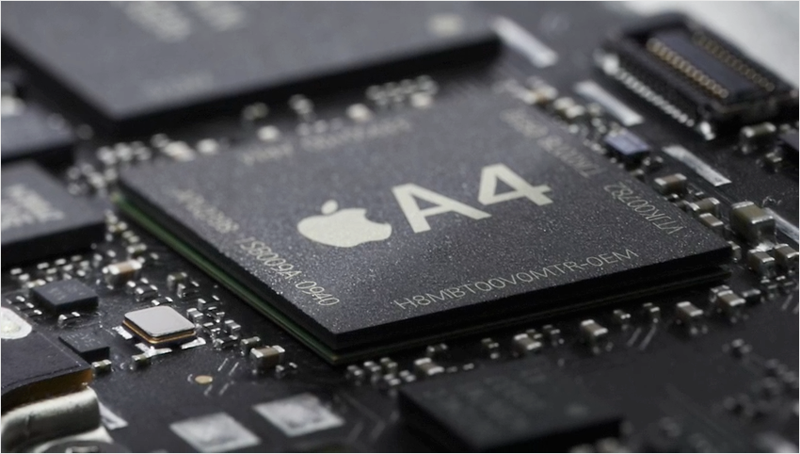iPad's Apple A4 CPU is feature-stripped ARM Cortex-A8 - report
Citing anonymous sources, Jon Stokes of Ars Technica wrote Sunday that the A4 is a custom 1GHz system on a chip with a single Cortex-A8 CPU and a PowerVR SGX GPU. Apple has not revealed specifics on the design of its processor aside from its speed, but has touted that the A4 was designed in-house by the company for the forthcoming iPad.
"In all, the A4 is quite comparable to the other Cortex A8-based SoCs that are coming onto the market, except that the A4 has even less hardware," the report said. "The iPad doesn't have much in the way of I/O, so the A4 itself can do away with the I/O that it doesn't need. In contrast, the typical Cortex A8-based SoC has more I/O hardware than a mobile phone can use, because you never know what customers will need which interface types."
The Cortex-A8 allegedly found in the iPad is the same chip that has been in the iPhone 3GS since it debuted last June. The major difference: The iPhone 3GS chip is clocked at 600MHz, while the Apple A4 is allegedly 1GHz.
So why bother with custom silicon? By forgoing some features commonly found on other Cortex-A8 devices, Apple can likely squeeze more power out of the processor than others, Stokes said. For example, the iPad "may well be the only" Cortex-A8-based device that does not have a built-in camera, "so Apple has probably ditched some dedicated image processing blocks."
"With one 30-pin connector on the bottom and no integrated camera of any kind, the A4 needs a lot less in the way of I/O support than comparable chips that are intended for smartphones or smartbooks," he wrote. "This means that the A4 is just a GPU, a CPU, memory interface block (NAND and DDR), possibly security hardware, system hardware, and a few I/O controllers. It's lean and mean to a degree that isn't possible with an off-the-shelf SoC."
He also went on to say that it's not clear whether P.A. Semi, the fabless chip designer Apple bought in 2008 for $278 million, had a part in the design of the A4. He said if the acquisition did play a part, the most likely area would be dynamic power optimization.
"It's entirely possible that the majority of the P.A. Semi team's efforts are going not into an iPad chip, but into an SoC for the iPhone," he wrote. "Because the iPad's LCD is so large and its power draw so great relative to the other components, it's hard to imagine that the A4 gives the iPad more than a few percent battery life advantage vs. a chip like the Snapdragon — in the grand scheme of things for a tablet device, the extra hardware that chips like the Snapdragon and the i.MX515 have on A4 probably doesn't matter a whole lot."
If true, the Ars Technica report soundly refutes a previous claim that the iPad included an ARM Cortex-A9-based CPU. Bright Side of News also incorrectly reported that the iPad had an ARM Mali 50-series GPU.
Regardless of the technology found in the A4, Apple is predicted to have spent about $1 billion to design its own custom silicon. And as noted in AppleInsider's hands-on impressions with the iPad, the processor makes even Apple's speedy iPhone 3GS seem a little slow.
Apple, which has been a licensee of the ARM architecture for years, claims the power efficiency of the chip will allow the iPad to offer users 10 hours of battery life in use, and over a month of standby.
"iPad is powered by our own custom silicon. We have an incredible group that does custom silicon at Apple," company co-founder Steve Jobs said during the company's iPad keynote. "We have a chip called A4, which is our most advanced chip we've ever done that powers the iPad. It's got the processor, the graphics, the I/O, the memory controller — everything in this one chip, and it screams."
 Sam Oliver
Sam Oliver












 Mike Wuerthele
Mike Wuerthele

 Malcolm Owen
Malcolm Owen
 Chip Loder
Chip Loder

 William Gallagher
William Gallagher
 Christine McKee
Christine McKee
 Michael Stroup
Michael Stroup






